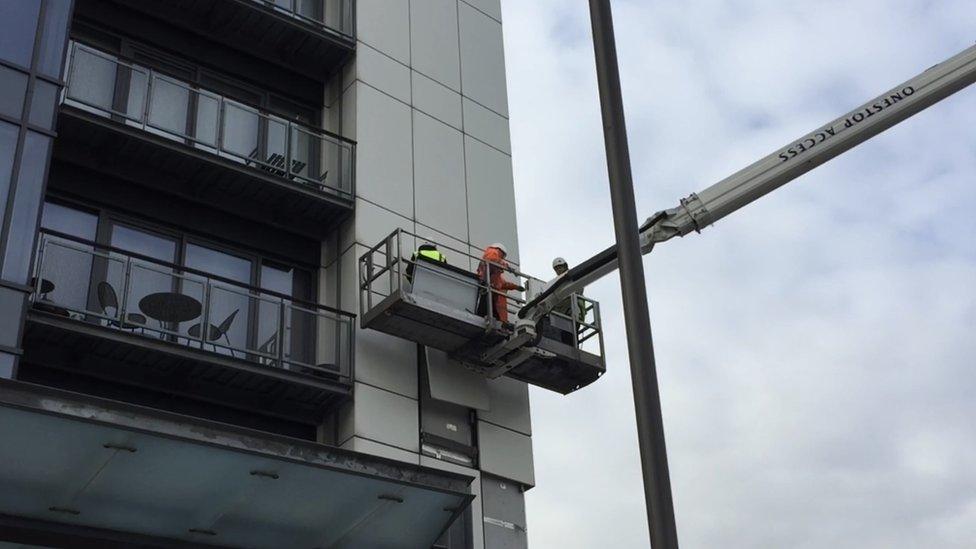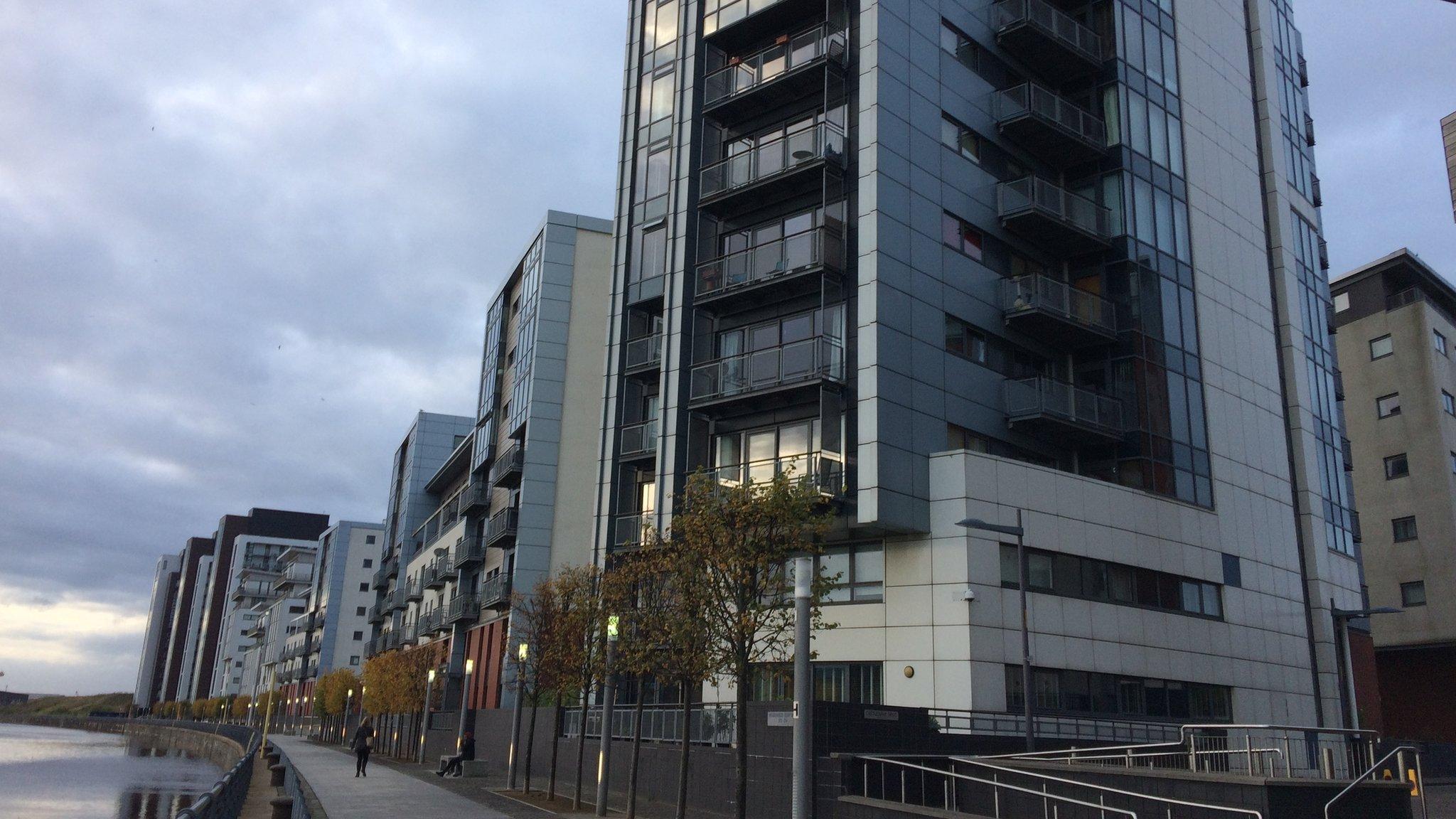Residents count cost of Grenfell-style cladding
- Published

Surveyors remove a sample of the cladding from one of the Glasgow Harbour properties
Residents of a private apartment complex could face a bill of up to £10m to remove Grenfell-style cladding from their building.
More than 300 properties at Glasgow Harbour are covered with the Aluminium Composite Material (ACM).
It is the same cladding which caused an inferno at the London tower block in June last year and claimed 71 lives.
A survey is currently under way to establish the cost of removing and replacing the cladding.
The scale of the problem affecting some buildings at Glasgow Harbour has been revealed by the BBC's Good Morning Scotland programme.
Residents of Glasgow harbour flats count cost of Grenfell-style cladding
Last week, it was announced that the bill for replacing cladding panels on two new Glasgow hospitals - the Queen Elizabeth University Hospital and the Royal Hospital for Children - would be £6m.
It is thought the work at Glasgow Harbour could cost as much as £10m, the equivalent of £30,000 per property.
The flats, just west of the Riverside Transport Museum, are mostly privately-owned.
Their property factor has told residents tests confirmed that the aluminium panels fitted to the outside of the building have no flame retardant properties.
Fire wardens have been brought in to patrol the corridors and a special fire alarm system has been installed.
Any fire alarm means the building must be completely evacuated, something which happens several times a month.

Paul Kirkland says he is shocked to be landed with the bill for the cladding
Castlebank Drive resident Paul Kirkland said: "Initially I was pretty angry that such a situation could have occurred in the first place.
"Then as we were told what the cost might be and that we would have to foot it, I was absolutely furious.
"Now I am absolutely dismayed that the thing has gone on this long and we are on the hook for it."

The Glasgow Harbour development was built by Taylor Woodrow Construction about 12 years ago
The Glasgow Harbour project was originally put up by Taylor Woodrow Construction under a design and build contract.
Taylor Wimpey, as the company is now known, did not want to take part in an interview but they did issue a statement.
It said: "We recognise that the situation at Glasgow Harbour is a cause for concern for both owners and residents.
"While we do not have any ownership or legal interest in the development, we are committed to working with all the parties involved in finding a solution."

The cladding on the buildings is not flame retardant
Along with Glasgow City Council, Taylor Wimpey is helping fund a six-week survey which is currently under way to establish how much it will cost to remove and replace the aluminium composite material or ACM.
The council is satisfied that the fire wardens and extra fire alarm system mean Glasgow Harbour is safe to live in.
The factors, Hacking and Paterson, did not want to take part in an interview or issue a statement but a company spokesman said they were trying to guide 341 individual owners through a very delicate situation.
He said the situation involved many people's homes which were often their principal asset and they did not want to prejudice the situation.
Change in regulations
At the heart of it all is an apparent contradiction.
Regulations in Scotland do not permit the use of ACM on high rise domestic buildings, but when Glasgow Harbour was designed and given planning permission in 2001 the regulations stipulated that cladding had to meet Class 0, the most demanding anti-flame spread classification.
Taylor Wimpey insist that Glasgow Harbour was designed and built in accordance with the Technical Standards relevant at the time, and all of the necessary planning consents and approvals were in place.
So how does that square with the finding that according to a letter sent to residents by the factor the ACM currently fitted has "no flame retardant properties".
According to Glasgow City Council it boils down to changes since 2001 in how fire retardant properties are tested.
A statement from Glasgow City Council said: "Before 2005, cladding on high-rise domestic buildings required a low-risk classification.
"The key relevant change in the new building standards system in 2005 - which in the main was little different from the previous legislation- was the guidance that external cladding on such properties now had to be non-combustible.
"This introduced a new testing regime which considered the entire panel, rather than just the surface. This had the effect of making this class of ACM impermissible."
- Published12 October 2017
